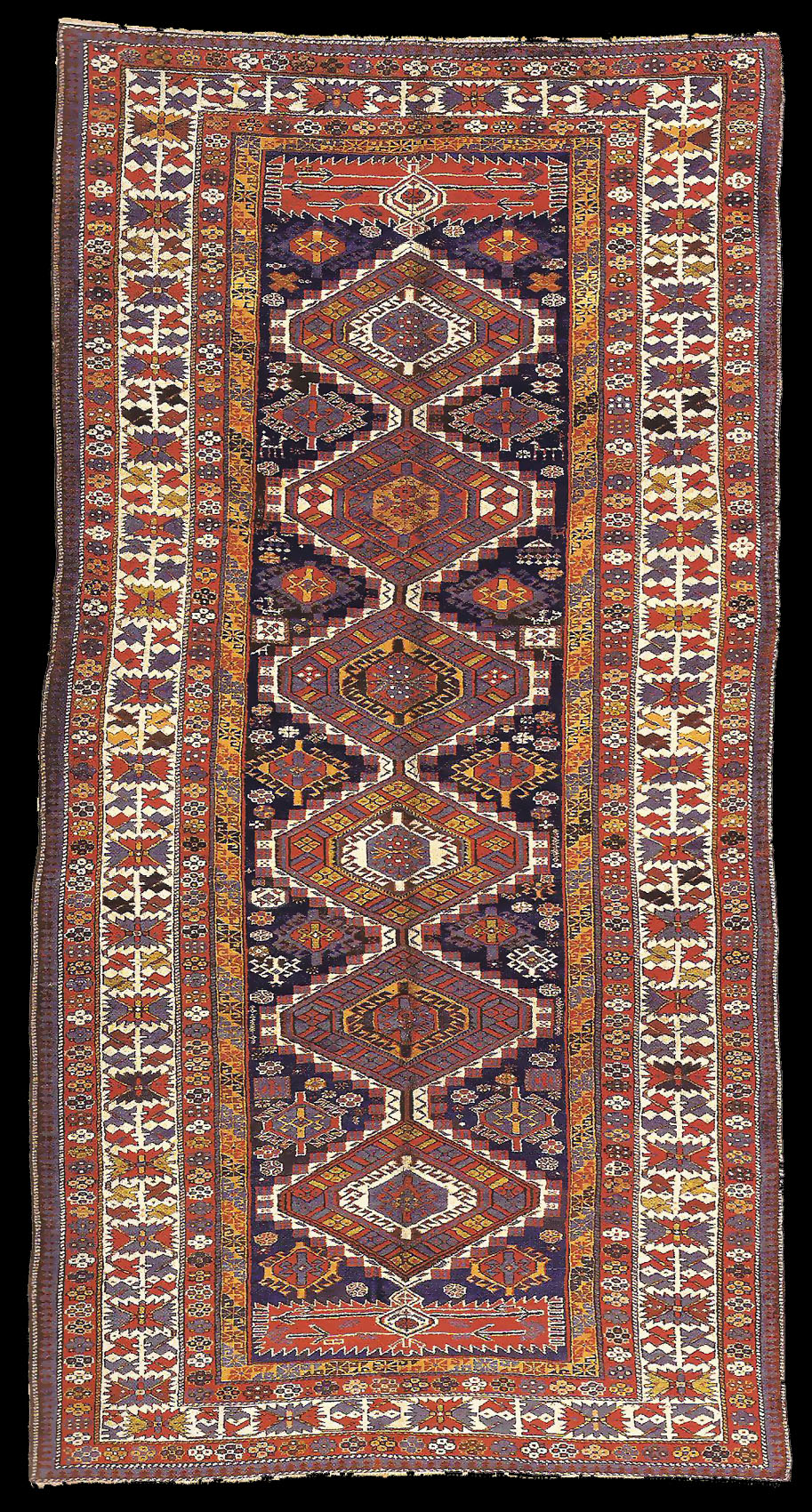|
Antique Shirvan rug, 19th century, Azerbaijan
83 Arjiman
Shemakha district, Shirvan
320 X 164 cm
Around 1870
Like all Arjiman carpets, this one also has a midnight-blue central field.
Six stepped hexagon medallions cover the entire width of the central field.
The flame motifs (faruhar) are almost squeezed in at the top and bottom and
look like narrow rectangles. Hexagons with hooks and lozenges make up the
majority of the other ornaments which decorate the rest of the field. The
main border on a light ground is atypical for this type, yet it is a border
which is quite common throughout Azerbaijan. It is the well-known variation
of the vine meander with huge palmettes and buds (so-called prawn or crab
border). Two rosette borders which depict four clover-leaves enclose the
main border. The inner golden-yellow border presents itself as a row of
blossoms with appendages which could be an S border at the same time.
Warp: Camel Hair, Z3S, light brown.
Weft: Cotton, Z2 S, white, two wefts waved.
Pile: Wool, Z2, CH, Z2, light brown to dark beige; Pile Height. 6 mm.
Knots: Symmetrical 1, H 50, V 30 = 1,500 Kn/dm2.
Handle: Velours, not thin, smooth.
Selvedge: c. 0.4 white cotton shirazi around 2 ribs in
figure-of-eight wrapping with supplemental threads.
Colours: 9; brownish-red, dark reddish-brown, brownish yellow, dark
beige (Camel hair), blackish-brown, midnight-blue, blue, green, ivory.
Condition: Pile oxidised to some extent, also brownish-red, upper end
and lower end are missing, otherwise good.
Literature: Doris Eder, loc. cit, p. 258, ill. 258.
from
Siyawouch Azadi "Azerbaijani Caucasian rugs"
 |

